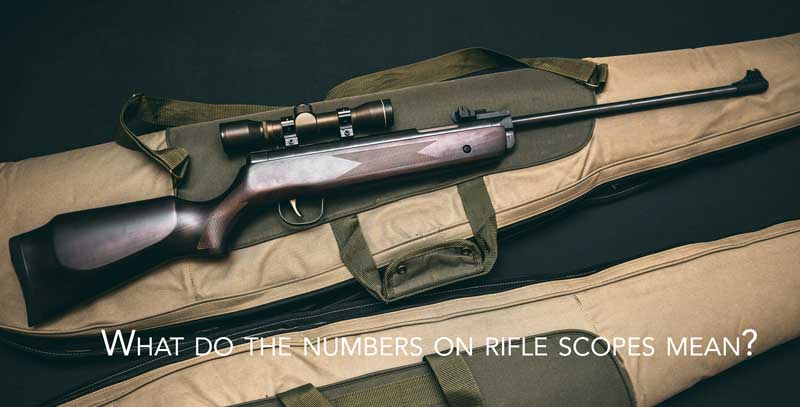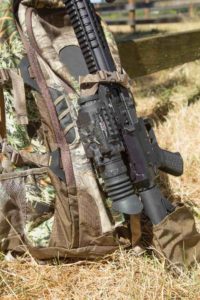
We’ve all aligned the reticle, squinting through our rifle scopes, puzzled by the confusing numbers. Together, let’s decode this mystery. The numbers aren’t just gibberish; they’re keys to our shooting prowess.
From magnifying our targets to enhancing image clarity, they’re crucial. So, join us as we explain the intriguing world of rifle scope magnification.
Quick Tip: It’s not just about seeing clearly; it’s about shooting smarter.
Key Takeaways
- Magnification is determined by the physical properties of the lenses and their coatings.
- Increasing magnification decreases the apparent distance to the image and increases the height of the target.
- Physical limitations of magnifying lenses include chromatic aberration, field curvature, and spherical aberration.
- When choosing a rifle scope, consider the magnification range that is sufficient for your anticipated targets, taking into account factors such as distance and size of the targets.
Understanding the Basics of Rifle Scope Magnification
We’re discussing how understanding the basics of rifle scope magnification can significantly improve accuracy in target shooting. Imagine us, huddled together under the open sky, rifles in our hands, eyes squinting into scopes. Focal lengths play a crucial role here. They’re like the steps on a ladder, bringing the target closer with each rung. As we adjust our scopes, the target size swells, bringing clarity and definition.
But it’s not all smooth sailing. Chromatic aberration, that pesky rainbow-hued blur, can sneak up with increased magnification. It’s like looking through a wavy glass pane, distorting our view, and shifting our aim. We learn to combat this by adjusting our field of view, shrinking the world outside our target to a mere sliver.
In the world of precision shooting, it’s a delicate dance between magnification and accuracy. We balance on the tightrope of clarity and distortion, teetering between the perfect shot and a missed opportunity. Freedom lies in that sweet spot, where our skill and understanding of magnification collide.
We’re not just shooting at targets, we’re reaching for liberation, one accurate shot at a time.
Magnification Explained: Decoding the Numbers
In our quest to master precision shooting, we’re now tackling the complex task of decoding the magnification equation, and it’s clear that an understanding of lens properties and focal lengths is crucial. We’re evaluating optical performance, like seasoned detectives, dissecting the nuanced connections between magnification and target acquisition.
As we traverse the intricate labyrinth of comparing different magnification options, we’re met with a mixture of anticipation and exhilaration. The impact of magnification on target acquisition becomes evident, transforming our understanding of long-range shooting. We’re no longer mere spectators, but active participants charting our own path of liberation through the dense woods of understanding.
We’ve come to appreciate the benefits of adjustable magnification, like an artist appreciating the subtle shades in a vibrant palette. It’s become clear that considerations for long-range shooting go beyond mere calculations. It’s a dance between the shooter and the scope, a relationship built on trust and understanding.
In this journey, we’re not just learning about scopes and shooting. We’re learning about ourselves, our patience, our ability to grasp complexities, and our passion for precision. The journey of decoding the magnification equation has become our shared quest for liberation.
Exploring the Physical Limitations of Magnifying Lenses
We’ve understood the math behind magnification, but now let’s delve into the physical limitations of magnifying lenses, and how they can impact our shooting performance. It’s like dancing on a tightrope, teetering between the exhilarating liberation of clear, closer targets and the uninvited drawbacks that come unbidden.
- Chromatic aberration, a spectral ghost that taints our target with color fringes.
- Field curvature, blurring the edges of our vision like a foggy morning.
- Spherical aberration, mocking our focus with a fuzzy halo around our target.
- The limited field of view, narrowing our world as if peering through a keyhole.
- And, the subdued image brightness, like a twilight veil cast over our sight.
This is the trade-off, the give and take. We seek liberation in clarity, in bringing the far near, yet we grapple with these limitations. As we twist the magnification ring, each click is a pact, an acceptance of what we gain and surrender. Yet, in this dance, in this balancing act, we find the thrill of the chase, the critical decision of precision versus breadth, brightness versus detail. We’re not just shooters. We’re seekers, making sense of this complex dance, pushing boundaries and embracing limitations.
Identifying Types of Distortion Related to Magnification
Spotting chromatic aberration, a type of distortion related to magnification, is like chasing a spectral ghost, and understanding its effects can dramatically improve our shooting accuracy. It’s a tricky beast, often lurking in the corners of our vision, marring the image quality with a haze of unwanted color.
| Distortion | Description | Impact on Image quality |
|---|---|---|
| Chromatic Aberration | Misalignment of color | Creates color fringes |
| Field Curvature | Blurry edges | Distorts image at the periphery |
| Spherical Aberration | Inconsistent focus | Blurs the image |
| Magnification Limitations | Image size constraints | Can lead to loss of detail |
| Image Quality | Overall clarity | Affected by all the above |
These distortions, born out of magnification limitations, are a constant battle. Field curvature, for instance, has a knack for blurring the edge of our vision, turning our sharp shot into a murky guess. On the other hand, the spherical aberration is a fickle friend, blurring what should be clear. But we’re not deterred. We’re seekers of liberation, challenging these limitations to claim our right to clarity and accuracy. We’ll conquer these spectral distortions with understanding, transforming our shooting accuracy from a haunting specter into a tangible, achievable reality.
Deciding on Rifle Scope Magnification Versus Distance
After delving into the intricacies of distortion related to magnification, we’re now ready to tackle the topic of deciding on rifle scope magnification concerning distance. We’re about to embark on a journey, a liberation of knowledge, and we can shed some light on this complex subject for you.
Let’s put ourselves in the shoes of a seasoned hunter, we’ve got our rifle ready, and we’re weighing our magnification considerations. We need to consider:
- The size of our target, a small game, maybe?
- Field of view, we don’t want to lose sight of our prey.
- Image brightness, it’s dawn, and the light is still dim.
- Our shooting precision, we’re confident in our skills but a bit of help wouldn’t hurt.
- The distance to the target, it’s about 300 yards away.
We aim for liberation, freedom in making informed decisions, and a release from uncertainty. With this knowledge, we can confidently choose a suitable magnification that will allow us to hit our target with precision, even from a distance.
It’s not just about the scope, it’s about us, about taking that shot with certainty and precision.
Frequently Asked Questions
What Type of Maintenance Is Required for Rifle Scopes?”
We’re responsible for maintaining our scopes. This includes scope cleaning techniques, applying protective measures, proper scope lubrication, and secure storage solutions. Troubleshooting tips come handy when unexpected issues arise. It’s all part of our shooting journey.
How Does Weather or Environmental Conditions Affect the Performance of Rifle Scopes?”
We’ve seen weatherproof scopes withstand foggy conditions. Humidity impact and temperature fluctuations can affect scope performance. Even altitude effects come into play. Yet, they persevere, liberating us to embrace our marksmanship, no matter the climate.
What Are Some Common Brands of Rifle Scopes and How Do They Differ in Their Magnification Capabilities?”
We’re comparing popular rifle scope brands like Nikon, Leupold, and Bushnell. They vary in pricing, optical technologies, and mounting options, all critical for hunting applications. We’ll guide you through these differences, striving for your freedom of choice.
How Does the Material or Coating of the Lens Affect the Quality of the Image in Rifle Scopes?”
We’re often asked how lens materials and coatings affect rifle scope image quality. Coating techniques, lens types, and manufacturing materials play crucial roles in minimizing image distortion, enhancing clarity, and ensuring lens durability.
Do Rifle Scopes Need to Be Calibrated or Adjusted Over Time and if So, How Is This Done?”
Yes, we must calibrate our rifle scopes over time. It’s like fine-tuning a musical instrument. Using calibration tools and adjustment techniques, we ensure accuracy. This can be a DIY task, but professional help is often recommended.
Conclusion
So there you have it, folks. We’ve journeyed through the jungle of numbers on our beloved rifle scopes, uncovering their secrets.
We’ve tamed the beast of magnification, confronted the goblins of distortion, and found our sweet spot in distance.
With this wisdom, we stand ready to make informed choices, enhancing our shooting escapades.
Knowledge, after all, is power, and today, we’ve added a powerful tool to our hunting arsenal.
Happy shooting, everyone!





